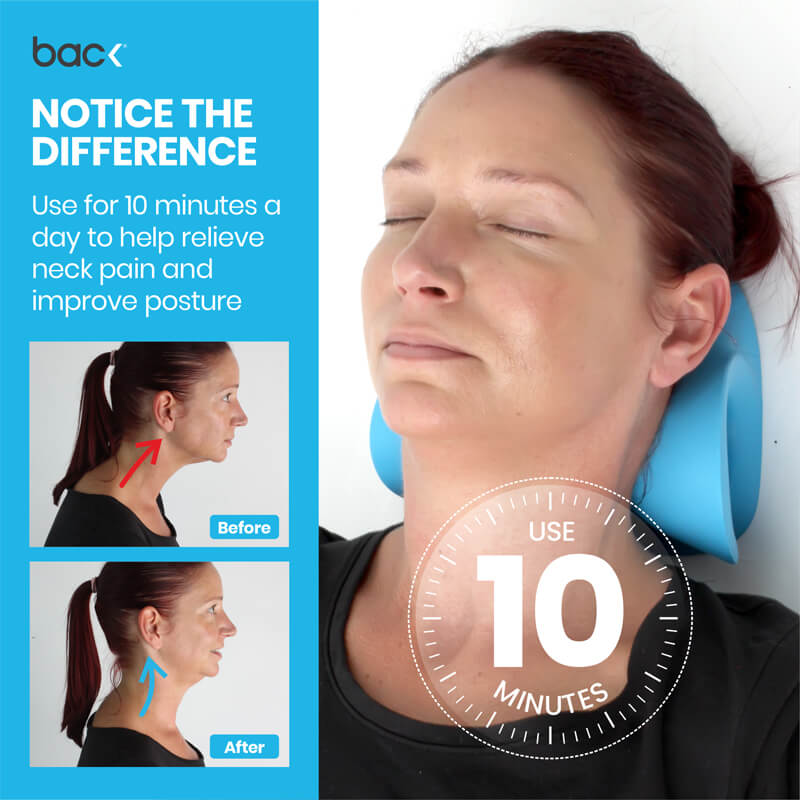Get Enduring Alleviation with the Neck Cloud: The Ultimate Neck Assistance
Get Enduring Alleviation with the Neck Cloud: The Ultimate Neck Assistance
Blog Article
Neck Pain in the Office: Determining Threat Elements and Implementing Ergonomic Solutions
Neck pain in the workplace is a common issue that can affect employee well-being and efficiency. By understanding the numerous threat aspects contributing to neck pain and applying ergonomic remedies, organizations can create an extra conducive job environment.
Common Causes of Neck Pain
Neck discomfort in the workplace is a widespread problem that can be attributed to numerous common reasons. Additionally, recurring movements such as frequent flexing, turning, or reaching can additionally contribute to neck discomfort over time.

Ergonomic Danger Factors
Poor comfort designs in the workplace can significantly add to neck pain amongst staff members. Aspects such as improper desk elevation, insufficient chair support, and uncomfortable positioning of computer system screens can all play a duty in the development of neck pain. When employees are required to rest for prolonged durations in settings that stress their neck muscle mass, it can lead to tightness, pain, and a lot more serious bone and joint concerns over time.
In addition, poor ergonomic techniques can result in staff members adopting unpleasant postures while functioning, such as craning their necks to see a computer system display or reaching uncomfortably for a mouse or key-board. neck cloud. These abnormal placements and recurring movements can put unnecessary stress on the neck and surrounding muscle mass, bring about pain and decreased productivity

Workdesk Arrangement Recommendations
To lessen the danger of neck pain and discomfort, there are numerous workdesk configuration suggestions that employees should consider. Ensure that the computer system screen is positioned at eye degree to protect against stressing the neck by looking up or down.
It is additionally vital to have ample illumination to decrease eye pressure, as scrunching up your eyes or leaning ahead can lead to neck stress. Arrange the workdesk layout to keep regularly made use of products within arm's reach, limiting the need for repetitive twisting or reaching motions. By implementing these workdesk configuration recommendations, staff members can develop an extra ergonomic work area that sustains neck wellness and lowers the danger of developing job-related neck discomfort.
Extending and Exercise Tips
Easy desk-friendly stretches can aid relieve neck discomfort and protect against rigidity. Neck rolls, shoulder shrugs, and mild side-to-side neck stretches are effective in eliminating tension.
It is necessary to take time-outs throughout the workday to carry out these workouts. Establishing pointers or utilizing applications that prompt motion can aid develop a normal stretching regimen. It is very important to listen to your body and avoid overstretching, particularly if you are brand-new to these workouts. Consistency is essential, so objective to integrate extending and workout right into your everyday job regimen. By focusing on these tasks, you can improve your physical well-being, reduce the risk of neck pain, and boost your general efficiency in the office.
Significance of Regular Breaks
In a fast-paced work environment where needs can add to physical stress like neck pain, developing a regimen that highlights the value of routine breaks is vital (neck cloud). Taking routine breaks throughout the workday is important for minimizing and avoiding neck discomfort. Long term durations of sitting or recurring jobs can result in muscle stress and tightness in the neck and shoulders. By including short breaks into the work regular, workers can decrease the threat of establishing neck pain and boost general comfort and home performance.
Normal breaks enable staff members to rest their muscular tissues, stretch, and turn, stopping rigidity and advertising better circulation. Urging employees to take short breaks every 30-60 mins can assist minimize the build-up of tension in the neck and shoulders. These breaks can additionally work as a possibility for workers to practice leisure techniques or gentle neck stretches, additionally advertising musculoskeletal health and wellness. Implementing a society that values and prioritizes routine breaks can have a substantial influence on lowering neck pain and improving general health in the office.
Verdict
In conclusion, dealing with ergonomic danger elements and carrying out appropriate workstation setups are crucial in lowering neck discomfort in the office. By advertising good stance, providing adequate assistance, and motivating normal breaks and stretches, companies can produce a healthier and much more productive Discover More workplace for employees. Focusing on staff member wellness with ergonomic services is key to stop discomfort and improving overall office satisfaction.
Neck discomfort in the office is a common problem that can affect employee health and performance. By recognizing and attending to these common reasons of neck discomfort in the work environment, employers can take aggressive actions to produce a more ergonomic and comfy work setting for their workers.
Poor ergonomics in the office can significantly add to neck discomfort among staff members. By carrying out these desk arrangement suggestions, employees can develop a more ergonomic work space that supports neck wellness and minimizes the risk of his comment is here establishing work-related neck discomfort.
Neck rolls, shoulder shrugs, and gentle side-to-side neck stretches are reliable in eliminating tension.
Report this page